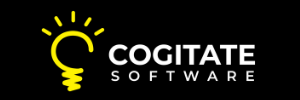The Report Viewer is a handy tool that you can use for viewing and printing your re- ports. You can choose to print your reports on paper or you can save time and paper by simply viewing them on your computer screen. You can open multiple instances of the report viewer at the same time, each showing a different report or even different versions of the same report.
Along with the ability to print your reports to paper any time you wish, there are several additional options available while viewing your reports. You can refresh the data within your report at any time, to reflect any changes that may have been made since it was first opened. You can turn the report Group Tree on or off. The report Group Tree is a condensed list of items from your report and you can highlight any item in the list to quickly locate it within the report. You can jump directly to the first and last page of your report or you can step forward and backward a page at a time. You can jump to a specific page by entering the page number in the space provided. You can search for specific text within your report, locating each successive occurrence of the text that you specify. You can even change the font size within your report, enhancing its appearance and readability based on your needs.
Finally, did you know that you can actually export your reports to external files? Once they are exported, you can view them using other applications outside of UtilAbility. To export any report, you simply click the Export Report button which is the left most button on top of the Report tab in the Report Viewer. You can choose the location and name for your report and the format of the file you are exporting. There are a variety of file formats to choose from. These include: Crystal Reports files (RPT), Adobe Acrobat files (PDF), Microsoft Excel files (XLS) where you can export the entire report or just the data in the report, Microsoft Word files (DOC), Microsoft Word editable Rich Text Format files (RTF), and finally, Extensible Markup Language files (XML). You can attach your exported report files to emails and send them to others or even to yourself to view at home after hours if you choose.
Many of the reports within UtilAbility can be executed at any time, even far beyond the time frame in which you are reporting. If you normally keep copies of your reports as they are printed, you can print and save paper copies or you can export them to report files. By exporting your reports to organized file locations, you can build extensive libraries that are quickly accessible any time you wish, without using the paper and cabinet space of traditional printed report libraries. You can even include exported report files in your regular backup for added security.
As you can see, the Report viewer has many nice features. So, the next time you are viewing a report, why not check some of them out and see how they can help you? As always, please contact the Cogitate Support Staff if you have any further questions or comments.
